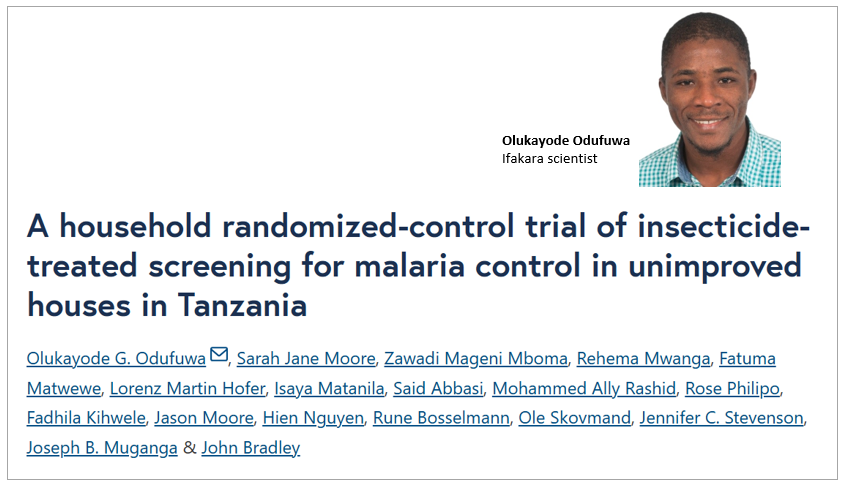
MALARIA CONTROL: Scientists confirm screening homes can cut infections

Better housing could be key to future malaria control, according to a new study led by the Ifakara Health Institute and partners, which found that covering open spaces in houses with mosquito-proof netting—known as insecticide-treated screening (ITS)—may help reduce malaria infections.
This approach involves modifying houses by covering eaves, windows, and wall holes with insecticide-treated netting, which is thicker and more durable than the material used in standard insecticide-treated nets (ITNs).
The ITS offers several advantages over other housing improvements: it acts as a physical barrier to mosquitoes, kills them upon contact due to the insecticide treatment, provides added community protection, allows better airflow compared to methods that completely block openings, and does not require regular maintenance.
First trial to test impact of ITS
Published on the Malaria Journal, the research took place in Chalinze District, where many homes have open eaves, windows, or wall holes that allow mosquitoes to enter easily. The researchers fitted 211 homes with special netting treated with insecticides (ITS). These screens were installed over windows, wall holes, and gaps between roofs and walls. Another 210 homes, which did not receive the netting, served as a control group.
"This is the first trial to determine the impact of insecticide-treated screening (ITS) against malaria using epidemiological endpoints,” noted the researchers.
“Prior to this trial, other studies have shown the entomological efficacy of ITS, and so their impact against malaria may be expected. This includes reduced mosquito density in a trial in Kenya, and increased mosquito mortality, blood-feeding inhibition, and deterrence in semi-field experiments in Tanzania."
Over a one-year period, residents in both the treated and untreated homes were tested for malaria twice—after the short rains in early 2022 and again after the long rains in mid-2022. Researchers also monitored mosquito numbers inside the homes and evaluated the durability and safety of the netting.
Promising results, but more evidence needed
Findings showed that malaria was slightly lower in homes with the treated netting (19.9%) compared to homes without it (28.3%) after the long rainy season. However, the difference was not big enough to say for sure that the netting caused the reduction. No benefit was seen after the short rains, and mosquito counts indoors were similar across both groups.
Despite these inconclusive results, school-age children living in houses with screened windows and eaves had a much lower chance of getting malaria after the long rains. This finding suggests that ITS may provide additional protection for children, a group especially vulnerable to malaria.
The ITS proved safe for household use, with no serious side effects reported. However, the strength of the insecticide treatment weakened over time, reducing the nets’ effectiveness after one year.
Study challenges, lessons
The study faced some limitations. Around 17–30% of households declined to participate, making it harder to collect enough data to draw firm conclusions. This lower participation rate reduced the overall statistical power of the trial.
What’s next?
While the results are not conclusive, the researchers conclude that ITS shows potential—especially for protecting school-age children in high-risk areas. They recommend larger-scale studies using longer-lasting insecticide treatments and stronger community engagement to ensure higher participation.
This study adds to growing evidence that improving housing—by closing entry points for mosquitoes—can be an important part of malaria control, especially in areas with high transmission rates and less well-protected homes.
Study led by Ifakara and global partners
The study was led by scientists from the Ifakara Health Institute, with Olukayode Odufuwa (lead author), Sarah Moore, and Zawadi Mboma at the forefront. The Ifakara team also included Rehema Mwanga, Fatuma Matwewe, Isaya Matanila, Said Abbasi, Mohammed Ally Rashid, Rose Philipo, Fadhila Kihwele, Jason Moore, Jennifer Stevenson, and Joseph Muganga.
Additional contributors included Lorenz Martin Hofer from Swiss TPH; John Bradley from the London School of Hygiene and Tropical Medicine; Hien Nguyen of Biolytrics Vietnam Co., Ltd; Rune Bosselmann of Vegro Aps in Denmark; and Ole Skovmand of MCC47 in France.
Read the publication here.
